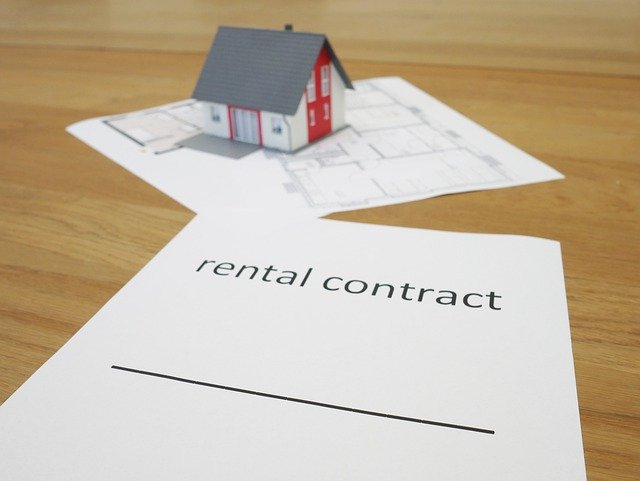Learn More About tiny house pods and how they create flexible living options
In recent years, the trend of downsizing and embracing a minimalist lifestyle has gained momentum. As a result, pod cabins and tiny house pods have emerged as popular choices for those seeking flexible and efficient living solutions. These compact structures offer a unique blend of practicality and creativity, providing a range of options for various needs. Whether you’re looking to create a guest house, a backyard studio, or a compact cabin, tiny house pods can offer a remarkable solution that fits seamlessly into your lifestyle.

Understanding Tiny House Pods and Their Appeal
Tiny house pods represent a modern approach to compact living that prioritizes efficiency without sacrificing quality of life. These structures typically range from 100 to 400 square feet and are designed with clever space-saving features, multi-functional furniture, and sustainable materials. The appeal lies in their ability to reduce living costs, minimize environmental impact, and offer freedom from the burden of maintaining large properties. Many individuals and families are discovering that downsizing to a tiny house pod allows them to focus on experiences rather than possessions, while still enjoying a comfortable and personalized living environment.
How Mod Pod Tiny Homes Create Versatile Living Spaces
Mod Pod Tiny Homes exemplify the flexibility inherent in modern tiny house design. These prefabricated structures are built with modular components that can be customized to meet specific needs, whether for a primary residence, guest house, home office, or vacation retreat. The modular nature means that homeowners can select floor plans, finishes, and features that align with their lifestyle preferences. Construction typically occurs off-site in controlled environments, ensuring quality control and faster completion times compared to traditional builds. Once delivered, these pods can be placed on various types of land, from rural properties to urban backyards, provided local zoning regulations permit. The adaptability of modular tiny homes makes them suitable for young professionals seeking affordable housing, retirees looking to downsize, or anyone interested in minimalist living.
Senior Small Houses: Aging in Place with Comfort
Senior Small Houses address the unique needs of older adults who wish to maintain independence while living in manageable, accessible spaces. These homes are designed with features such as wider doorways for wheelchair access, no-step entries, grab bars in bathrooms, and open floor plans that reduce fall hazards. The reduced square footage means less maintenance, lower utility bills, and easier upkeep, which can be particularly beneficial for seniors on fixed incomes. Many senior small houses also incorporate universal design principles, ensuring that the space remains functional as mobility needs change over time. Additionally, these compact homes can be situated on family property, allowing seniors to remain close to loved ones while maintaining their own private living quarters. The combination of safety features, affordability, and proximity to support networks makes senior small houses an increasingly popular option for aging in place.
One Level Tiny Homes: Accessibility and Convenience
One Level Tiny Homes eliminate the need for stairs, making them ideal for individuals with mobility challenges, families with young children, or anyone who prefers single-story living. These homes maximize horizontal space through thoughtful design, incorporating open-concept layouts that create a sense of spaciousness despite the compact footprint. Storage solutions such as built-in cabinetry, under-floor compartments, and loft-style sleeping areas accessible via ladders or ramps help optimize every inch of available space. The single-level design also simplifies heating and cooling, as air circulation is more efficient without multiple floors. For those planning long-term residency, one level tiny homes offer the advantage of being easily adaptable to changing physical needs without requiring costly renovations. The practical benefits of single-story living combined with the affordability of tiny house construction make these homes an attractive option for diverse demographics.
Flexibility in Location and Lifestyle
One of the most compelling aspects of tiny house pods is their flexibility regarding placement and use. Many tiny homes are built on trailers, allowing owners to relocate as desired, whether for work opportunities, climate preferences, or simply a change of scenery. Stationary tiny house pods can be installed on purchased land, leased lots, or as accessory dwelling units on existing properties. This versatility extends to lifestyle choices as well. Tiny house living encourages a minimalist mindset, prompting residents to prioritize essential belongings and experiences over material accumulation. The reduced financial burden associated with smaller homes often enables owners to work less, travel more, or pursue passions that might have been unaffordable with traditional housing costs. Whether used as a full-time residence, seasonal retreat, or rental property, tiny house pods adapt to the evolving needs of their occupants.
Cost Considerations and Financial Planning
Understanding the financial aspects of tiny house pods is essential for prospective buyers. Costs vary significantly based on size, materials, customization level, and whether the home is DIY-built, kit-assembled, or professionally constructed. Basic models may start around $30,000 to $50,000, while high-end custom builds can exceed $100,000 or more. Beyond the initial purchase price, buyers should consider land costs, utility hookups, permits, insurance, and ongoing maintenance. Many people find that despite the upfront investment, the long-term savings on utilities, property taxes, and maintenance make tiny house living financially advantageous compared to traditional housing.
| Tiny Home Type | Estimated Cost Range | Key Features |
|---|---|---|
| Basic Shell Pod | $30,000 - $50,000 | Unfinished interior, basic structure, DIY completion required |
| Modular Prefab Home | $50,000 - $80,000 | Factory-built, customizable layouts, quicker installation |
| Custom Built Tiny House | $80,000 - $150,000+ | Fully customized design, premium materials, professional construction |
| Senior-Accessible Small House | $60,000 - $100,000 | Universal design features, single-level, safety modifications |
Prices, rates, or cost estimates mentioned in this article are based on the latest available information but may change over time. Independent research is advised before making financial decisions.
Environmental and Sustainable Living Benefits
Tiny house pods align with growing environmental consciousness by reducing resource consumption and carbon footprints. Smaller living spaces require less energy for heating and cooling, resulting in lower utility bills and decreased greenhouse gas emissions. Many tiny homes incorporate sustainable features such as solar panels, composting toilets, rainwater collection systems, and energy-efficient appliances. The construction process itself often generates less waste compared to traditional home building, and some builders prioritize reclaimed or eco-friendly materials. By choosing tiny house living, individuals contribute to a more sustainable future while enjoying the practical benefits of reduced environmental impact. This alignment with ecological values resonates particularly with younger generations and environmentally conscious consumers seeking to minimize their ecological footprint without sacrificing comfort.
Conclusion
Tiny house pods offer a compelling alternative to conventional housing, providing flexible living options that accommodate diverse lifestyles, budgets, and values. From modular designs that adapt to changing needs to senior-friendly single-level homes, these compact dwellings demonstrate that quality of life need not be tied to square footage. Whether motivated by financial considerations, environmental concerns, or a desire for simplified living, individuals exploring tiny house pods discover a path toward greater freedom, sustainability, and intentional living. As the tiny house movement continues to grow, these innovative structures prove that thinking small can lead to significant lifestyle improvements.



